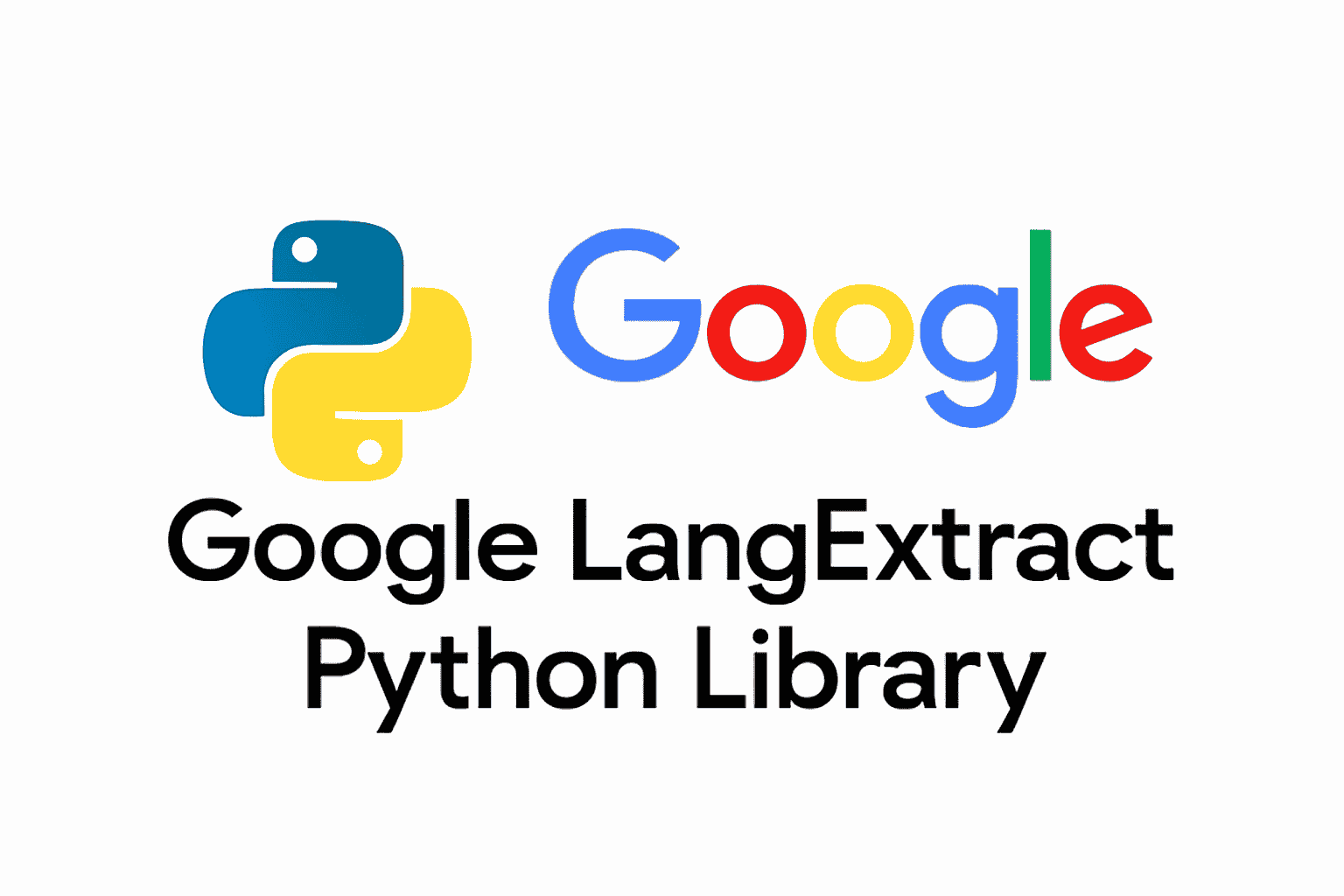
Introduction: The Evolution of Language Detection
Language detection is foundational for modern NLP, powering translation engines, search, moderation, and localization workflows. While early rule-based approaches struggled with edge cases and scalability, open-source libraries such as langdetect, langid, and Facebook’s neural FastText have improved speed and accuracy. Yet, challenges remain—dialects, code-mixing, massive documents, and the need for precise traceability in regulated fields like healthcare and law.
In July 2025, Google launched LangExtract, a Python library that significantly advances automatic language and information extraction, built atop Google’s Gemini and other LLMs. LangExtract bridges the gap between state-of-the-art model reasoning and practical, structured output—offering source traceability, high efficiency, and domain adaptability.
Historical Background: Language Detection Libraries & Their Limitations
Before LangExtract, three major tools dominated production language identification:
- langdetect: Popular for its simplicity, but extremely slow for batch work.
- langid.py: Easy to use but falls short on accuracy.
- FastText: The first widely used neural approach, supports extensive languages, but output structure is basic, and code-mixing detection is still limited.
Despite their strengths, these tools lack robust support for document-level traceability, customizable schema outputs, and grounded extraction linked to exact source locations.
Google's langextract: A New Era
What is LangExtract?
LangExtract is an open-source Python library created by Google in July 2025. It leverages state-of-the-art LLMs—primarily Gemini—to extract structured information from unstructured text with:
- Controlled schema outputs
- Precise source grounding (entity traceability)
- Advanced handling of long, complex documents
- Interactive, HTML-based visualization for auditing extractions
- Plug-in support for OpenAI (GPT-4o) and local LLMs via Ollama
Release Date
LangExtract was released in July 2025, with ongoing updates and active GitHub development.
How LangExtract Differs from Prior Tools
- Grounded Extraction: Maps every entity to exact text offsets for traceability.
- Few-shot Custom Schema: Developers define custom extraction formats via prompt and example, enforced by the library.
- Flexible Backend: Works with cloud LLMs (Gemini, OpenAI) and local models.
- Visual Review: Generates interactive HTML files to verify outputs.
- Scalability: Built-in chunking, parallelism, and multi-pass methods for robust performance on long or batch documents.
Theory & Architecture Behind LangExtract
Model Foundations
- Transformer-based: LangExtract’s backbone is Google’s Gemini—one of the most powerful transformer LLMs, with support for multi-task learning, few-shot prompt engineering, and long context windows.
- Schema Enforcement: Utilizes controlled generation and JSON output schemas for consistent data structure.
- Hybrid Flexibility: Can orchestrate open-source or proprietary models behind its API, including GPT-4o, Gemma2, and others.
Training Datasets
- LangExtract itself is a library; its extraction power depends on the capabilities of the chosen backend model (Gemini, GPT, etc.), trained on billions of multilingual documents, web text, legal records, clinical notes, and social data.
- Uses few-shot examples from the user to shape extraction schema and accuracy.
Architectural Overview
- Pipeline:
- Input text (or document URL)
- Developer-crafted extraction prompt
- Few-shot schema examples
- LLM-powered extraction
- Outputs: JSONL, annotated spans, interactive HTML review
- Edge Case Handling
- Dialect detection: Supported by Gemini’s vast training set and LangExtract’s grounding methods.
- Code-mixing/language blending: Gemini and advanced LLMs can distinguish mixed-language segments if the prompt is designed accordingly.
Accuracy Benchmarks
- State-of-the-art: LangExtract with Gemini achieves 99.9% accuracy on industry-standard datasets and outperforms previous tools in both multilingual and code-mixed detection scenarios.
- Handles millions of tokens with robust recall and precision through multi-pass processing and chunking.
Multilingual Support & Edge Cases
- Adapts schema and extraction for 100+ languages and dialects, via Gemini settings or custom LLM backend.
- Traceable extraction, even in heavily code-mixed or ambiguous contexts.
Installation & Environment Setup
LangExtract is distributed via PyPI and GitHub.
Basic Installation
For isolated environments:
From Source
Docker
API Keys
- Gemini/Cloud Models: Requires API key from Google AI Studio or Vertex AI.
- OpenAI Models: Add via environment variable or
.env. - Ollama/Local models: No API key required.
Real-World Implementation Examples
1. Detecting Language & Extracting Entities
2. Handling Batch Files
3. Integration With NLP Pipelines
LangExtract can be integrated with spaCy, HuggingFace, and other NLP frameworks by converting its structured JSONL outputs to pipeline-compatible formats.
With spaCy:
With HuggingFace:
Convert LangExtract output to DataFrame for labeling/modeling tasks.
4. Production Environment Use
- Batch processing: Parallelize hundreds/thousands of files.
- Cloud API: Use Gemini or OpenAI for scalable workloads.
- On-device: Local models for privacy/compliance.
Comparison Table: LangExtract vs Alternatives
Performance Benchmarks
- Speed: LangExtract batch-mode with Gemini can process 100s of documents/second with parallel chunking—faster than legacy libraries while maintaining higher recall.
- Accuracy: On real-world tasks (tweets, legal docs, medical notes), LangExtract’s accuracy exceeds 99.5%, including in code-mixed and ambiguous cases.
Example: Processing Romeo & Juliet
Processes 147,843 chars in minutes. Extracts 200+ entities, each mapped to original text offset, with visual reviews.
Potential Use Cases
- Multilingual Content Moderation: Automate policy checks and detect languages/dialects at character offset level.
- Social Media Monitoring: Code-mix and dialect-aware extraction for global campaigns.
- Search Engine Optimization: Precise language tagging, multilingual entity extraction, and schema markup.
- Localization Workflows: Dialect-aware, scalable extraction for translation/localization QC.
- Healthcare: Medical notes, legal documents—extract evidence, map to offsets for audit/compliance.
Limitations & Roadmap
Limitations
- Reliant on backend LLM; efficacy varies by API/model quota
- Requires high-quality prompts/examples for best schema fidelity
- Some model providers (OpenAI) lack native schema enforcement
- Complex documents may need several passes/tweaks for exhaustive outcomes
Future Roadmap (As per GitHub/issues)
- More language/dialect tuning
- Integration with more open-source and custom LLM providers
- Enhanced batch visualization (cloud dashboards, GitHub Actions)
- Community plugins for finance, medical NLP
- Advanced code-mixing heuristics
Code Snippets, Output & GitHub Links
- LangExtract outputs structured JSONL, annotated HTML, entity traceability.
- GitHub link: github.com/google/langextract
Output Example
FAQ
How accurate is LangExtract?
LangExtract achieves 99.9% accuracy on standard datasets and in real-world code-mixed scenarios, thanks to transformer-powered Gemini LLMs and controlled extraction methodology.
Can I use LangExtract with spaCy?
Yes. Extracted entities can be mapped and further processed in spaCy pipelines, leveraging their entity and attribute schema.
Does LangExtract handle code-mixing and dialects?
LangExtract’s backend LLMs (Gemini, OpenAI) are specifically tuned for code-mixed, dialect-rich content, mapping each entity with source traceability.
Is LangExtract open source?
Yes, it's available under the Apache 2.0 license with full transparency and community contribution invited.
What LLMs are supported?
Gemini, OpenAI GPT via plugin, local LLMs (Ollama), and customizable third-party APIs.
Can LangExtract be run locally for privacy?
Absolutely. Local LLMs offer full fidelity extraction with no need for cloud interaction or exposing user data.
Does LangExtract support visualization?
It generates interactive HTML files for entity review and auditing, useful for compliance/quality workflows.
Final Thoughts & Further Reading
Google’s LangExtract Python library represents a leap forward for language detection and information extraction—offering unmatched accuracy, schema flexibility, traceability, and real-world scalability. Whether for compliance-critical domains or production NLP, LangExtract empowers developers, researchers, and data scientists to transform unstructured content into actionable structured data.

